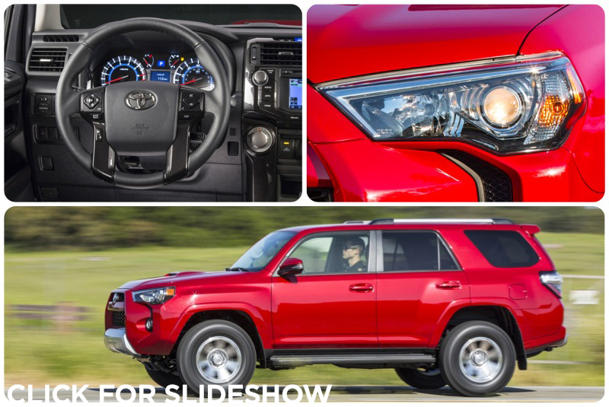 The genus of truck-framed sport utility vehicles has sharply declined in recent years, as consumers favor the soft-riding, more efficient car-based models rather than ones which still provide a modicum of off-road and towing prowess. So when an automaker like Toyota updates an older model like the 4Runner for 2014 with all new bodywork and interior, it should be taken as a vote of confidence for those who like their trucks to have a little toughness.
The genus of truck-framed sport utility vehicles has sharply declined in recent years, as consumers favor the soft-riding, more efficient car-based models rather than ones which still provide a modicum of off-road and towing prowess. So when an automaker like Toyota updates an older model like the 4Runner for 2014 with all new bodywork and interior, it should be taken as a vote of confidence for those who like their trucks to have a little toughness.
But then you see it, and much like the controversial new Jeep Cherokee, you can't unsee it.
Toyota tweaked the mechanical pieces of the 4Runner, but didn't dilute them; there's still a 5-speed automatic mated to either a pure rear-wheel-drive setup or an optional four-by-four (not all-wheel-drive) with locking center differential. All of which is still powered by the 270-hp V-6, strong enough to score a maximum towing capacity of 5,000 lbs. That lack of changes also means only a one mile-per-gallon increase in highway fuel economy for the 4Runner to 22 or 23 mpg depending on drivetrain; the city ratings remain at 17 mpg for all versions.
Inside, passengers get up-to-date seat materials, a more pleasant cabin with softer surfaces and a modern version of the Toyota in-dash computer. Which they should enjoy, because it saves them from having to look at the front of the new 4Runner, an odd collision of angles and scoops that appear inspired by an angry largemouth bass. Those fish need that gullet to thrive in a variety of habitats; making the 4Runner stand out on the road may be Toyota's similar strategy for the 4Runner's survival.
Source: Yahoo!

No comments:
Post a Comment